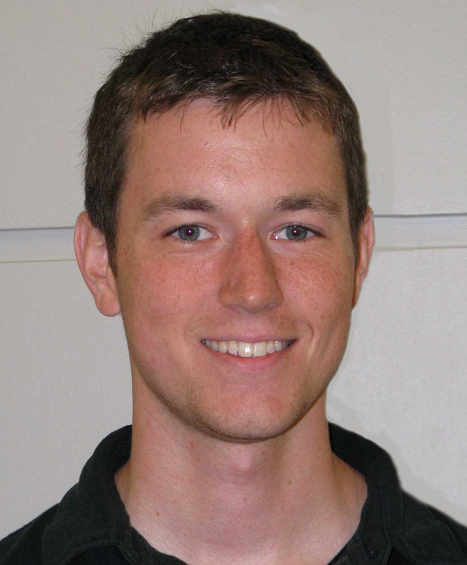2010-2011 Fellows
|
 |
Kyle Bridgeo Degree Sought : Ph.D.
Research Focus: Structural vibrations, specifically focusing on developing techniques to spatially identify damping effectiveness in complex structures
School Name : The Edward Devotion School
Teaching Partner: Bob Kondel
Kyle's Project GLACIER Site
|
My research focuses on developing both analytical and theoretical techniques for spatially identifying constrained layer damping (CLD) treatment effectiveness in complex structures. To date, no technique other than guess and check has been identified. This leads to systems with large amounts of damping treatment that contribute no vibration dissipation value. I have spent the past six months spearheading the idea of using thermal imaging technology to achieve our program goals. Assuming that all vibrational energy dissipated by CLD treatments is converted to heat and conducted through the system, it follows that a temperature distribution must be created, presumably with the largest temperatures occurring where the most heat is being generated. These maximum heat locations would correspond to the positions of the most effective damping treatments. This is a continuing effort requiring numerical and analytical modeling of coupled vibration and thermal systems as well as in lab experimentation on CLD treatment samples. |
At the sixth grade level, in Massachusetts, students have not yet seen basic physics in the classroom. As the vast majority of mechanical engineering is based in physics any research incorporation I have integrated my research through conceptual description, leaving the math and physical principles to their future high school experiences. In a unit on electricity generation, I took the time to describe the ideas behind ocean wave energy collectors (WECs). These collectors, or at the least the ones applicable to my field, illustrate structural vibrations in a very easy to describe way – a mass on a spring. This model’s simplicity allowed the students to conceptualize the operation of a WEC and connect that to structural vibrations. I hope to include future demonstrations involving basic acoustics and thermal imaging |
|


 Sponsored by the NSF GK-12 Program
Sponsored by the NSF GK-12 Program





 Sponsored by the NSF GK-12 Program
Sponsored by the NSF GK-12 Program


